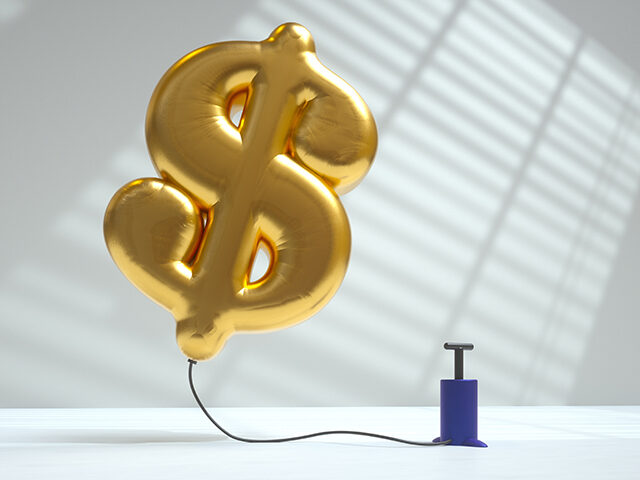Growth Is Blooming in the U.S. Economy
The American economy finds itself awash in the newfound bloom of economic springtime.
The sages at S&P Global reported on Tuesday that all seven sectors of the U.S. economy posted increases in business activity during February, up from four in January. This is the first time all seven sectors have seen a synchronized rise since April of 2022.
Which is to say that the last time growth was spread so broadly across the tableau of the American economy was just after the Federal Reserve began hiking its benchmark interest rate up from near zero to today’s range of 5.25 to 5.50 percent. It’s now been seven months since the last Fed hike, and whatever drag those hikes might have had seems to have run its course.
As we witness the unfolding of a growth story not heard in nearly two years, we expect a softening of the sound of the persistent hand-wringing over allegedly “restrictive” interest rates. The American economy has proven to be much less vulnerable to higher rates than was commonly supposed.
There are still those arguing that the decline of inflation has raised “real rates” — that is, interest rates after inflation — even while the nominal interest rate target has held steady. The problem with this view is that there’s so little evidence anywhere in the economy that the inflation-adjusted rate is restraining real activity. Businesses are investing, payrolls are growing, and output is expanding.
What the Real Raters Get Wrong
There’s always been an asymmetry to the concept of “real rates” because it tends to subtract some measure of inflation—typically either recent inflation, current inflation, or expected inflation—from the current nominal rate. But businesses do not pay the current nominal rate for long. They pay the blended rate over the course of the life of an investment. When they are considering whether to make an investment, the “real rate” that matters is not today’s but the expected real rate over time.
So, has this intertemporal real rate been restrictive? Not for years. The Federal Reserve has consistently projected that it thinks its policy rate will fall to 2.5 percent in the not so distant future and that it will be around there for the longer run. As a result, businesses see the current real rate as a temporary aberration and not an impediment to their plans to expand.
Financial markets do the same thing. The yield of long-term bonds reflects the expected path of the policy rate over time. So, even when the Fed was hiking, markets priced actual borrowing rates faced by businesses as if the policy rate would eventually return to just 2.5 percent.

Traders work on the floor of the New York Stock Exchange (NYSE) during morning trading on March 4, 2024 in New York City. (ANGELA WEISS/AFP via Getty Images)
In other words, there’s a kind of twin forward-thinking effect undermining the restrictiveness of monetary policy. Bond markets are discounting against future cuts and businesses are investing with an eye to lower funding costs. There may be some room for policy rates to hold back economic activity in light of this, but it is very likely much smaller than what most analysts expect.
The Coiled Spring of Expecting Rate Cuts
This also means that any sign that loosening is imminent or has already begun is likely to have a much bigger impact than a quarter of a point cut might otherwise indicate. Businesses and bond markets read the first cut as beginning the process of “normalization” to the much lower policy level projected by Fed officials, making the current real rates even less relevant.
Raphael Bostic of the Atlanta Federal Reserve has illuminated this phenomenon, revealing a cadre of executives bristling with readiness, eager to seize the moment rate cuts materialize.
“I asked one gathering of business leaders if they were ready to pounce at the first hint of an interest rate cut,” Bostic wrote in an essay published on the Atlanta Fed’s website this week. “The response was an overwhelming ‘yes.’”
As Bostic warned, this very eagerness, this pent-up zeal to capitalize on perceived future conditions, could inadvertently stoke the embers of inflation, challenging the prudence of a Fed cut.
“If that scenario were to unfold on a large scale, it holds the potential to unleash a burst of new demand that could reverse the progress toward rebalancing supply and demand,” Bostic wrote. “That would create upward pressure on prices. This threat of what I’ll call pent-up exuberance is a new upside risk that I think bears scrutiny in coming months.”
We’ll get a look at what effect pent-up exuberance might already be having later this week. The collective optic nerve of Wall Street will be fixed on the February payrolls data that will be released on Friday. After a duet of hearty, above 300,000 monthly performances in December and January, any dramatic overture above the anticipated 180,000 would likely disrupt expectations for rate cuts this summer.

COMMENTS
Please let us know if you're having issues with commenting.